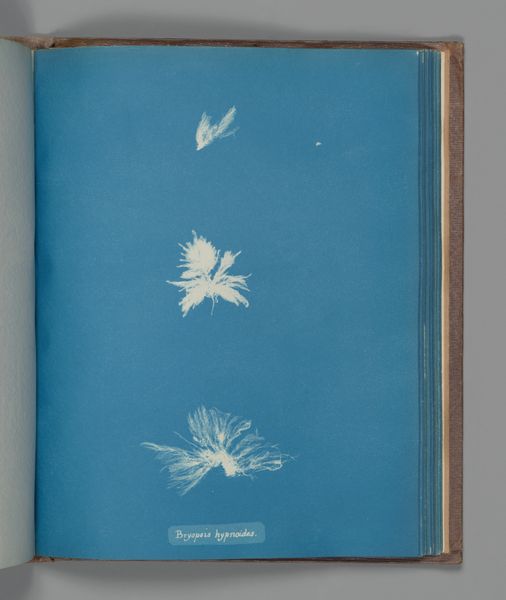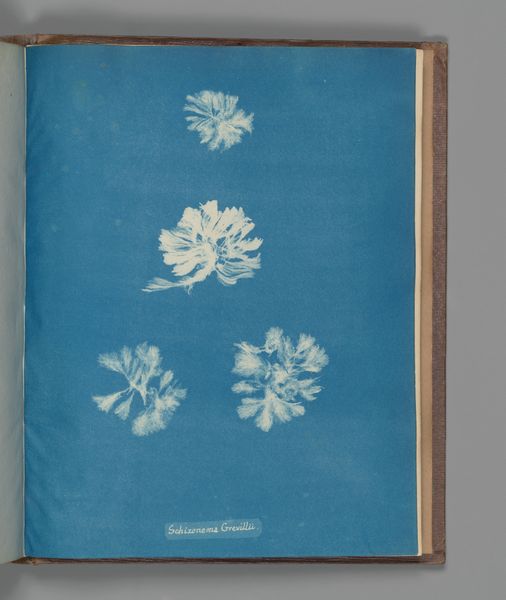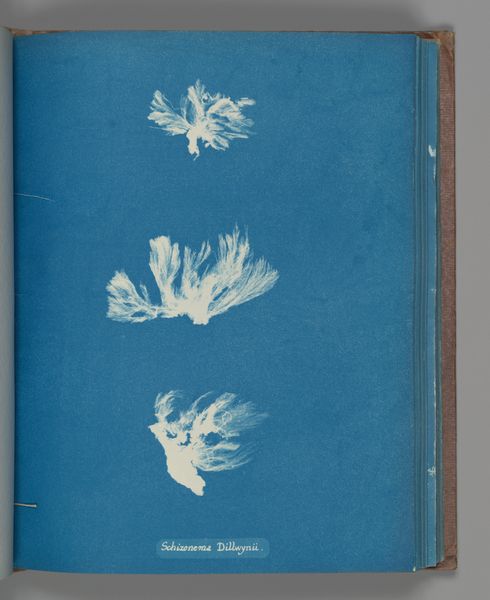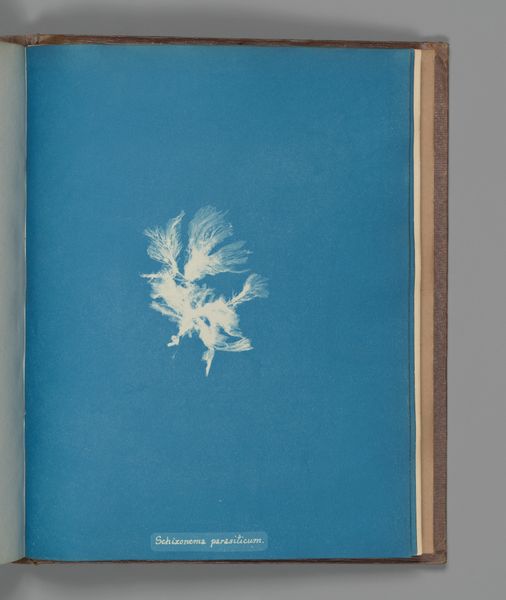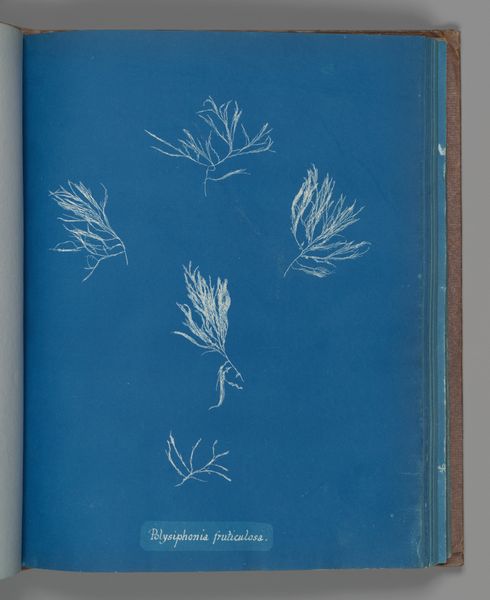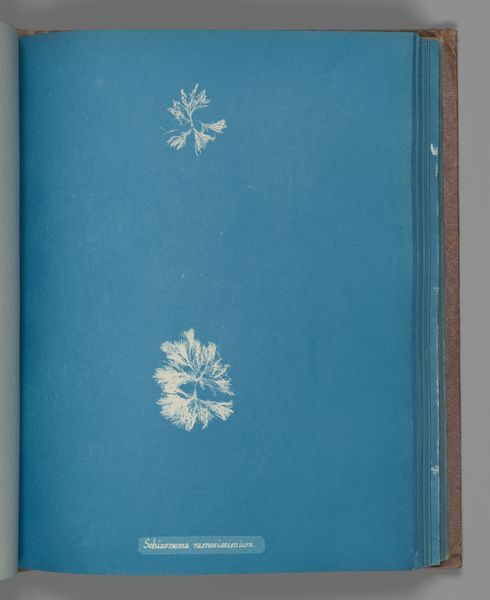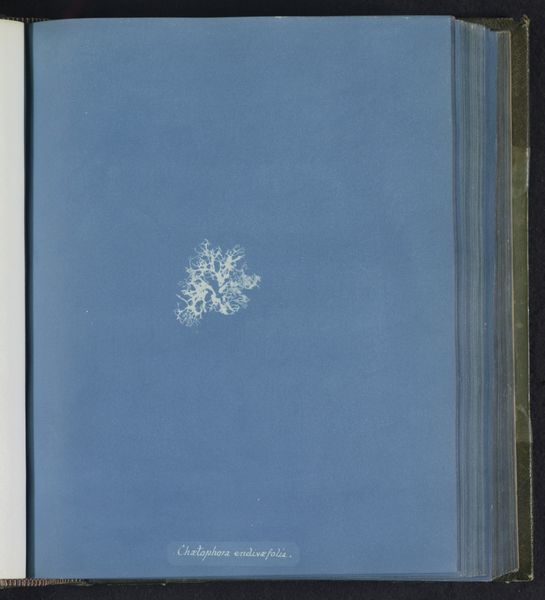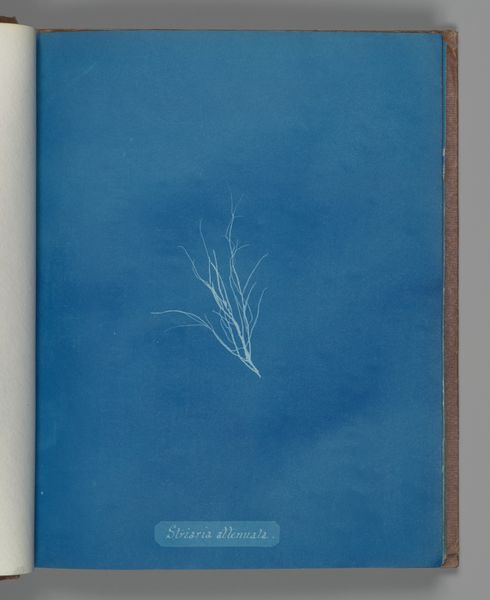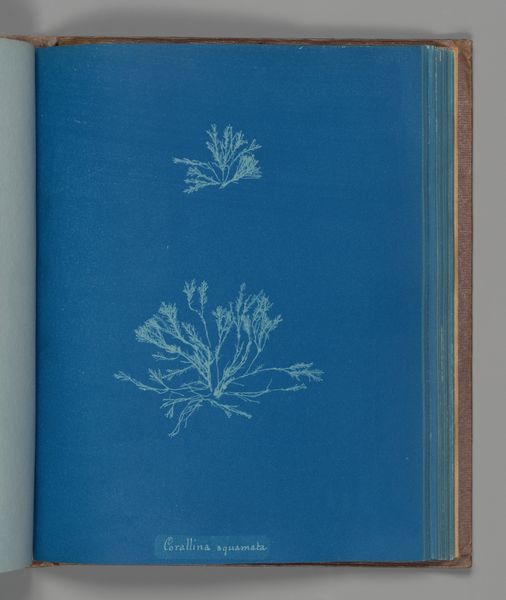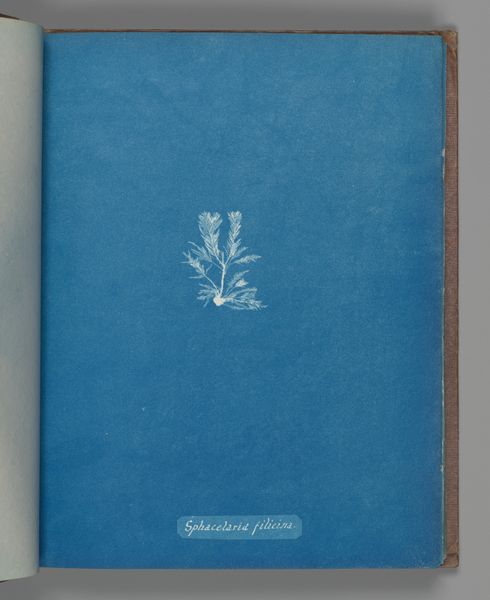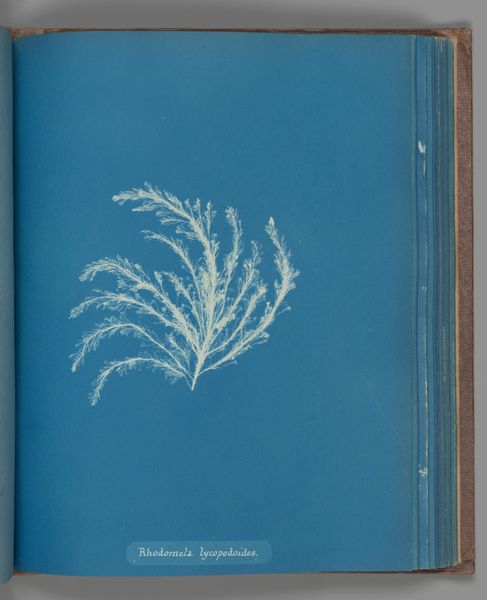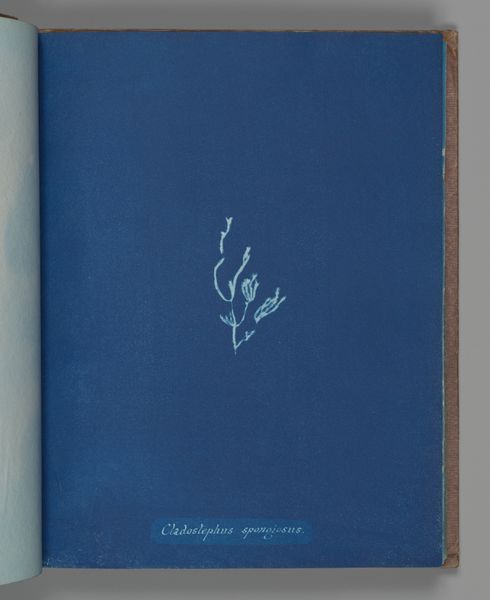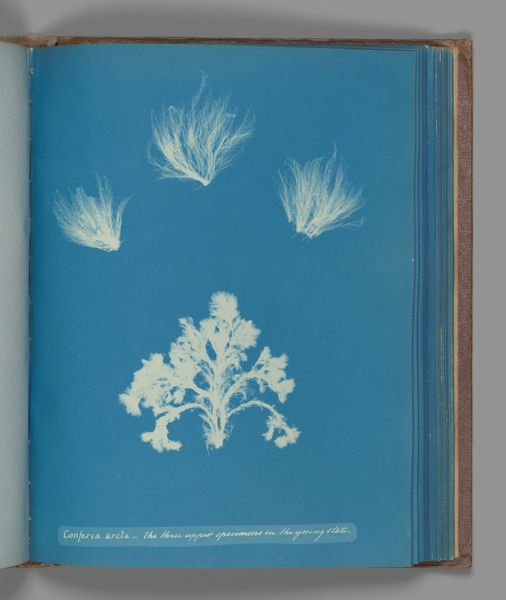
print, paper, cyanotype, photography
#
aged paper
#
still-life-photography
#
book binding
#
homemade paper
#
paper non-digital material
#
paperlike
# print
#
book design
#
personal journal design
#
paper
#
cyanotype
#
photography
#
book mockup
#
children publication design
#
publication mockup
Dimensions: Image: 25.3 x 20 cm (9 15/16 x 7 7/8 in.)
Copyright: Public Domain
Editor: Here we have "Schizonema comoides," created sometime between 1851 and 1855 by Anna Atkins. It’s a cyanotype, which gives it that striking blue and white color scheme, almost like a blueprint. There are three delicate seaweed specimens arranged vertically on the page. What strikes me most is how scientific it feels, yet there’s also this undeniable artistic quality to it. How do you interpret this work? Curator: It’s fascinating how Atkins’ work sits at the intersection of art and science, isn't it? Cyanotypes like this one weren't initially conceived as art but as a method of documenting botanical specimens. Consider the context: photography was still a relatively new technology. Atkins used it to create a visual inventory of algae for scientific purposes, publishing "Photographs of British Algae: Cyanotype Impressions" - arguably the first book of photographs. Doesn't the very act of choosing how to arrange the algae on the page, then capturing it through photography, introduce an artistic perspective? Editor: That’s a great point! So, in a way, the constraints of the scientific method opened up new avenues for artistic expression? I hadn't thought of it that way. The limitations of early photography created a unique aesthetic. Curator: Exactly! And beyond that, think about how these images were received. Were they primarily seen as scientific documents or as aesthetic objects? The lines were blurred. And, arguably, are still blurred today. What does it tell us about how art and science mutually influence each other and reflect the institutional frameworks around them? Editor: I see! It's not just about the image itself but about how its meaning shifts depending on the context and who's viewing it. Thanks, that’s given me a whole new perspective to consider when looking at this piece. Curator: And for me, thinking about these early photographic publications makes me consider what is gained and lost in our current age of digital image saturation.
Comments
No comments
Be the first to comment and join the conversation on the ultimate creative platform.
